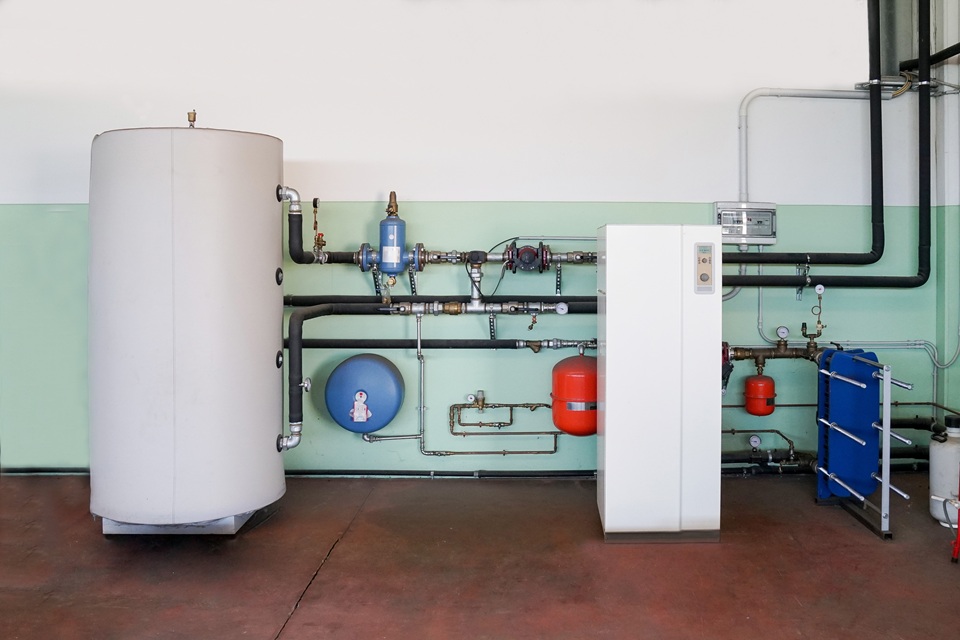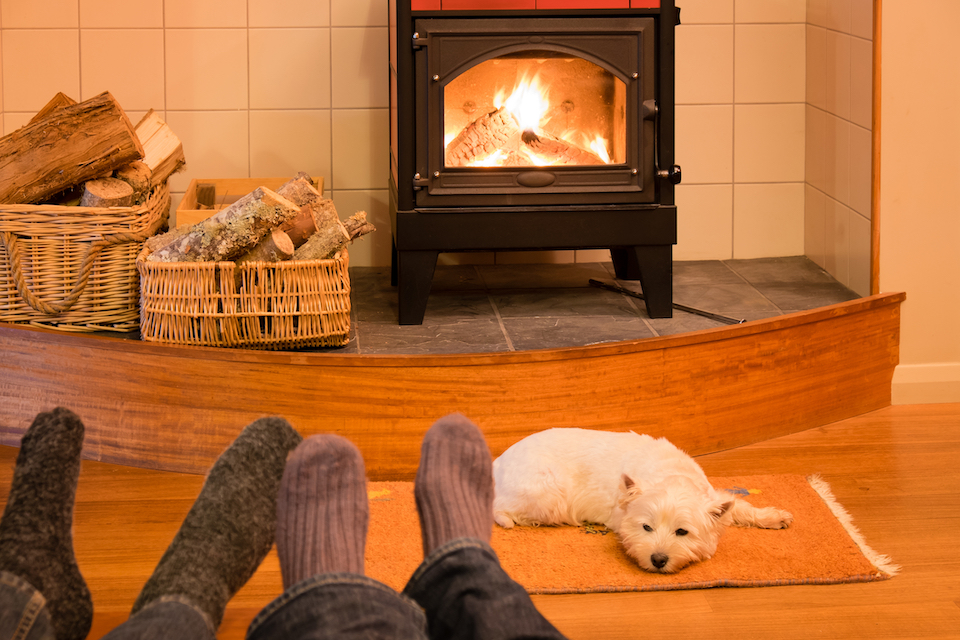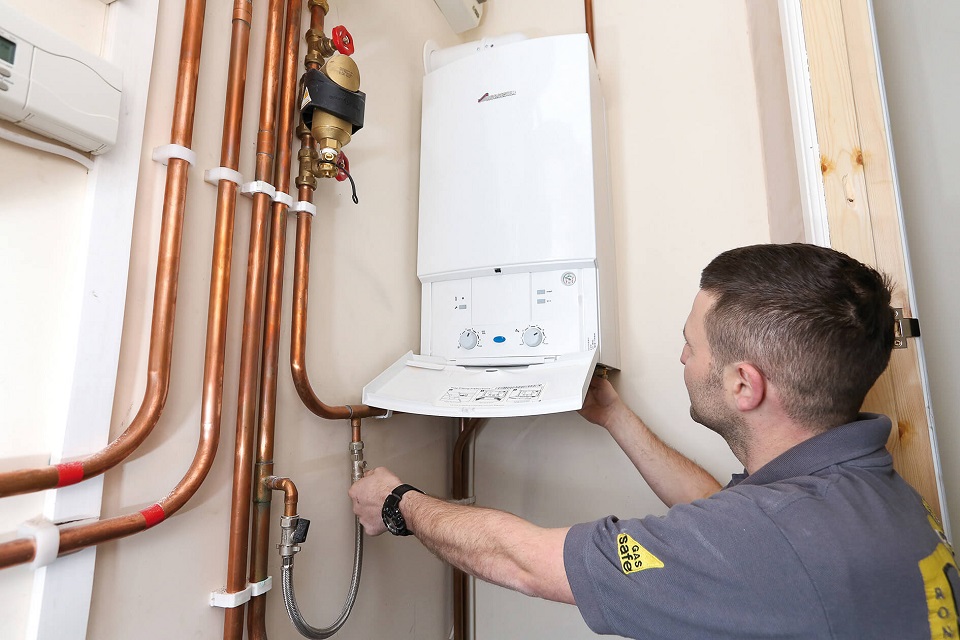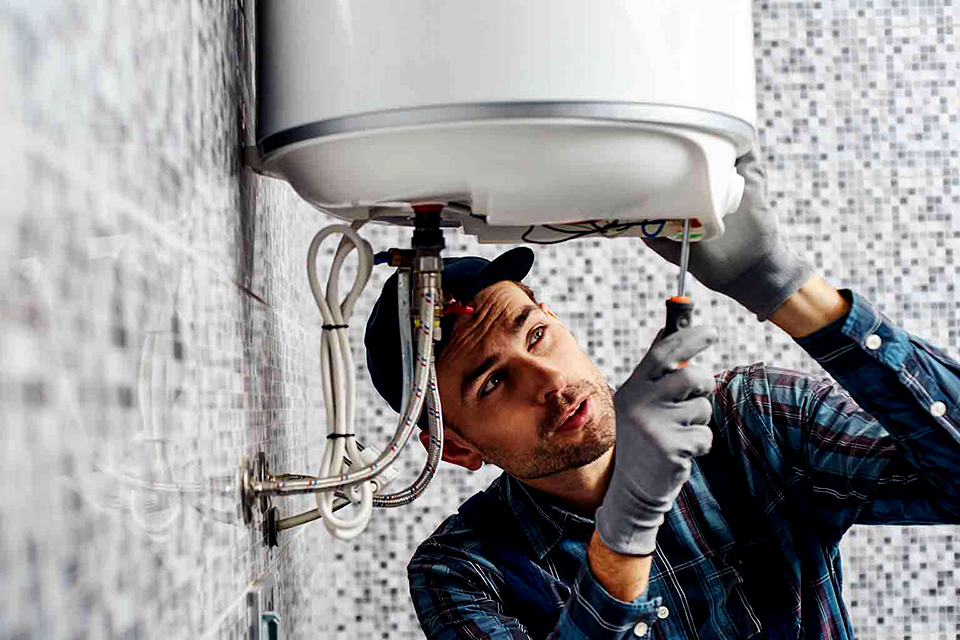What is a Ground Source Heat Pump?
Ground source heat pumps are a fairly modern innovation that provides a renewable and energy-efficient heating and hot water system for homes. Unlike a boiler that burns fuel, ground source heat pumps energy-efficient natural heat from the ground and convert it into heat and hot water for your home.
Typically, this is achieved through a system of underground pipes, or loops, that absorb the thermal energy from the earth and transfer this to your home through the ground source heat pump equipment.
These systems are perfect for us in the UK as the ground temperatures are fairly stable throughout the year, remaining somewhere in the region of 8°C and 12°C.
Because of this stability, the ground source heat pump can deliver heat throughout the colder months. The rise of ground source heat pumps can be attributed to a few factors, but mainly it is due to the modern homeowner becoming far more environmentally conscious, both to reduce household bills and to cut down on their carbon footprint.
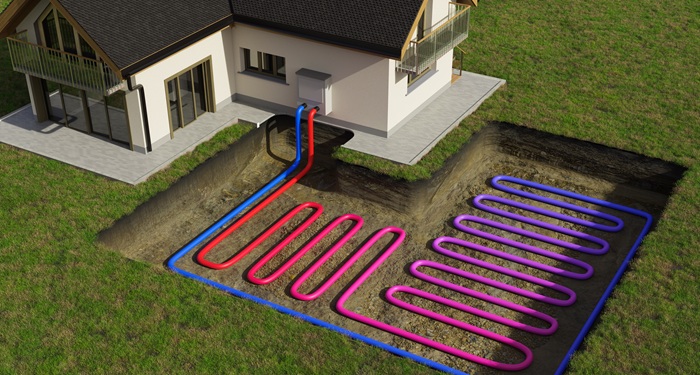
Ground source heat pumps can be integrated with a number of common household essentials, like radiators, hot water cylinders and underfloor heating.
If you also benefit from renewable electricity, like solar panels, you will essentially have a completely green solution that aligns with the UK’s goal of net zero by 2050.
It is this plight towards net zero which will continue to drive the installation of new ground source heat pumps in the coming years, and it is likely that the UK government will continue to incentivise the installation of systems like these.
- What is a Ground Source Heat Pump?
- How Much Does a Ground Source Heat Pump Cost?
- Ground Source Heat Pump Prices
- What are the Supply Costs for Ground Source Heat Pumps?
- What are the Additional Costs of Installing a Ground Source Heat Pump?
- Tradesmen's Costs for Installing a Ground Source Heat Pump
- How Long Does it Take to Install a Ground Source Heat Pump?
- Types of Ground Source Heat Pumps
- How Much Does It Cost to Remove a Ground Source Heat Pump?
- FAQs
How Much Does a Ground Source Heat Pump Cost?
The cost to purchase and install a ground source heat pump is a significant investment. However, most homeowners balance this out with the long-term energy savings, along with the sustainability benefits. However, the technology offers.
If you take, for example, an extended-termer average three-bedroom detached home in the UK, the cost of a ground source heat pump will typically land around the £12,000 mark. This will include both the supply of the product itself and the full installation. However, there are a few factors that can impact this price.
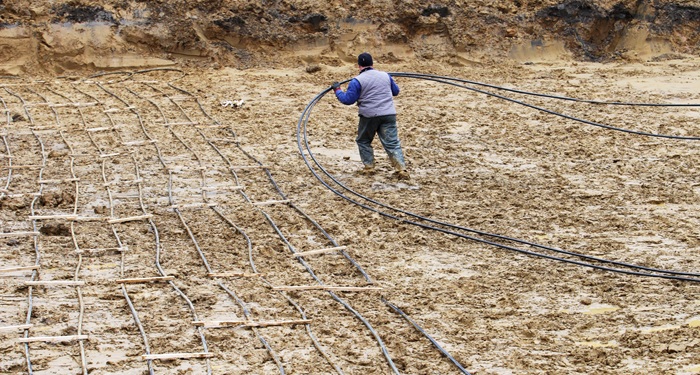
The cost of a ground source heat pump can vary depending on the size of your property, the existing heating equipment you have installed, the type of system you choose, and the amount of groundwork required for the installation. Furthermore, if your property needs to go through some upgrades for insulation and electrics, this will add more to the overall cost of the system.
This estimate covers the key components such as the heat pump unit, ground loop piping, connection to heating systems (like underfloor heating), thermostatic controls, and labour. Homeowners should also factor in design consultation, system commissioning, and possible modifications to existing heating elements.
Ground Source Heat Pump Prices
| Type of Ground Source Heat Pump | Estimated Installation Cost |
|---|---|
| Horizontal Loop System | £12,000 |
| Vertical Loop System | £15,000 |
| Hybrid Ground Source System | £13,000 |
| Three-Bedroom House | £80–£100 |
| Four-Bedroom House | £90–£120 |
| Small Commercial Premises | £100–£150 |
These figures include both equipment and professional fitting. Hybrid systems, which may incorporate features from both ground and air source technology or work alongside boilers, provide flexible retrofit solutions.
What are the Supply Costs for Ground Source Heat Pumps?
The supply-only costs for ground source heat pumps represent quite a large portion of the overall estimate, so we’ll supply only at this point.
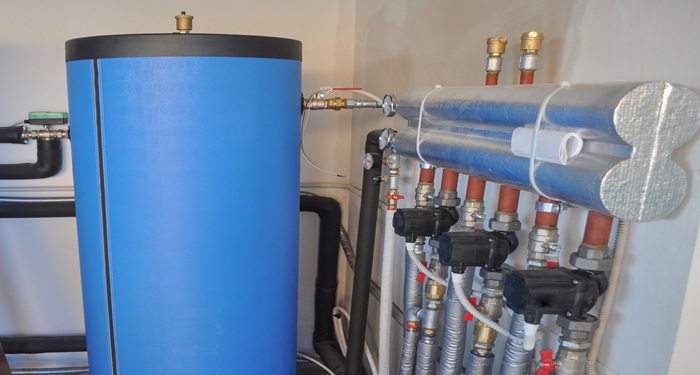
Here is a quick breakdown of the average supply-only costs for each type of ground source heat pump:
- Horizontal Loop System: £6,000
- Vertical Loop System supply-only
- Hybrid Ground Source System: £7,000
However, several factors influence the final price of supply-only systems:
Loop Type
The type of system is the first key price factor, with vertical systems tending to cost more due to the additional requirement of specialist equipment that will need to be used to drill deep boreholes. On the other hand, horizontal systems require more surface area of land but need far fewer machinery items for installation.
System Output (kW Rating)
The larger the home, the more powerful a system, which leads to a more expensive equipment purchase. For example, a 12kW system may cost more than a 6kW model, but it will heat a larger space effectively. If you opt for a unit that is too small, you may find that it doesn't work effectively enough for your home.
Brand and Efficiency
As with pretty much any purchase, some brands and performance levels will cost more than others. However, this is usually a worthwhile investment, mainly due to the lifespan of the systems and the warranty periods provided, not to mention the additional features that you find on higher-end models.
Accessories and Controls
Modern heat pumps often come with smart thermostats, weather compensation systems, and zoned heating controllers. These optional extras can add £500–£1,500 to the supply cost.
What are the Additional Costs of Installing a Ground Source Heat Pump?
The main additional costs related to the installation of a ground source heat pump are usually related to upgrading your home. Here’s a breakdown of common additional costs:
Groundworks and Excavation
One of the most labour-intensive parts of the installation of ground source heat pumps is the excavation of the area required. Labour-intensive zonal systems require trench digging and vertical systems involve deep drilling, both of which are tiring, dirty and laborious aspects of the job.

- Example cost: £3,000
The actual cost will depend on the type of soil, along with how easy it is to access your garden or yard. For example, rocky or clay-heavy ground can increase labour time and equipment hire fees.
Underfloor Heating or Radiator Upgrades
In order to maximise the energy efficiency and effectiveness of their systems, a lot of households opt for underfloor heating and upgrades to their radiators, especially if they have quite old and inefficient systems in place.
- Example cost: £5,000 for underfloor heating
Sometimes, older radiator systems are inefficient with low-temperature heat pump flow, and as such, an upgrade is essential.
See the underfloor heating cost breakdown here.
Electrical Work or Fuse Board Updates
A new ground source heat pump will add a significant amount of strain to your electricity system, so if your current system doesn't have the capacity for additional load, the panel's overall system may need to be upgraded.
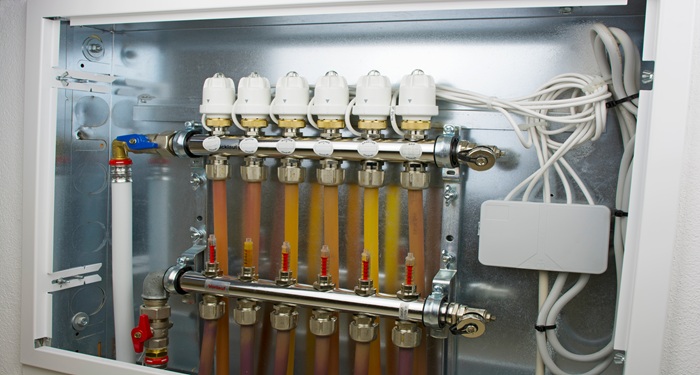
- Example cost: £600-£2,500
Installers may also need to connect the system to your home’s control system, requiring additional electrical labour.
Read about fuse box replacement costs here.
Insulation Improvements
It cannot be overstated just how important proper insulation in your home is, especially if your new ground source heat pump is to work at its optimal efficiency.
- Example cost: £1,000
Investing in cavity wall insulation, loft insulation, and even double glazing will help stop heat loss and reduce long-term bills.
Compare insulation upgrade options here.
Heat Pump Commissioning and Certification
This is a crucial step that ensures that the system has been correctly installed and that it is safe for use. Most importantly, this needs to have been done to be eligible for financial government schemes and incentives.
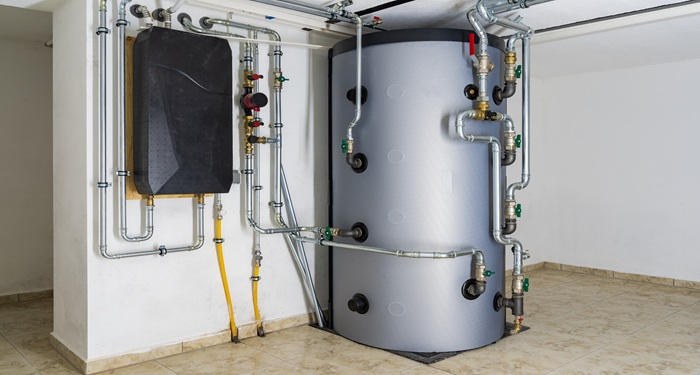
- Example cost: £500
Without proper commissioning, your warranty may be invalid.
Tradesmen's Costs for Installing a Ground Source Heat Pump
The cost of tradesmen is the other side of the estimate. Tradesmen's costs, and again, represent a significant portion. The following figures are for just the labour and do not include the supply or additional costs.
- The average hourly rate for a heating engineer is around £50-£70 per hour.
- The typical flat-rate installation cost is around £4,000
The cost of labour can increase depending on a number of factors. For example, if you opt for a large or complex system, the job will take longer and the cost of labour will increase. If you live in a large city like London, the cost of living is higher, meaning that tradespeople will charge more for their services when compared to areas like the North West, where the cost of living is much lower.
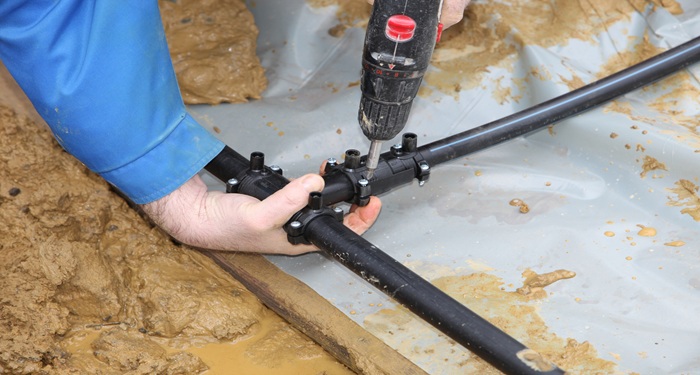
Installers will usually visit your home for a pre-assessment to calculate the expected labour time and any site-specific challenges.
How Long Does it Take to Install a Ground Source Heat Pump?
The timeline for installing a ground source heat pump depends heavily on the system type and some property-specific factors. Here is a general guide:
| System Type | Average Install Time |
|---|---|
| Horizontal Loop | 5-7 Days |
| Vertical Loop | 7-10 Days |
| Hybrid/Retrofit | 4-8 Days |
There are some key factors that can influence the installation time, which are:
- Soil type and weather: Wet or rocky ground can delay work
- Access to the site: Narrow pathways or remote areas may require special equipment
- Upgrades needed: Radiator or electrical improvements add time.
- Project scale: Larger homes with complex plumbing networks take longer
In addition, commissioning the system and waiting for parts or inspection appointments can stretch the total project duration.
Types of Ground Source Heat Pumps
When it comes to choosing the right type of heat pump system, you need to consider your property's layout, the garden space, your heating requirements, and above all else, your budget. Let’s take a look at some of the options that are available on the market:
Horizontal Loop System
Horizontal ground loops are laid in shallow trenches spread across a wide area.
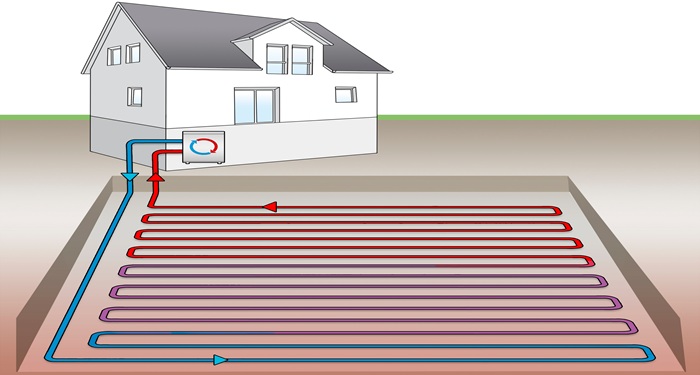
- Example cost: £12,000
Pros:
- Lower material and drilling costs
- Easier access for future maintenance
- Suitable for properties with large gardens
Cons:
- Requires significant outdoor space
- Ground disturbance during installation can impact landscaping.
Vertical Loop System
Boreholes are drilled deep into the earth, making this option suitable for compact properties.
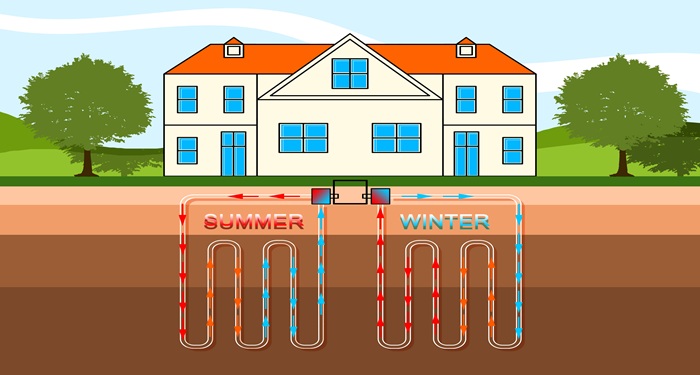
- Example cost: £15,000
Pros:
- Takes up less surface space
- Ideal for small gardens or urban plots
- Greater temperature stability at depth
Cons:
- Higher installation and drilling costs
- Requires specialised equipment and contractors
Hybrid Ground Source System
Combines ground source with air source or boiler systems for added flexibility.
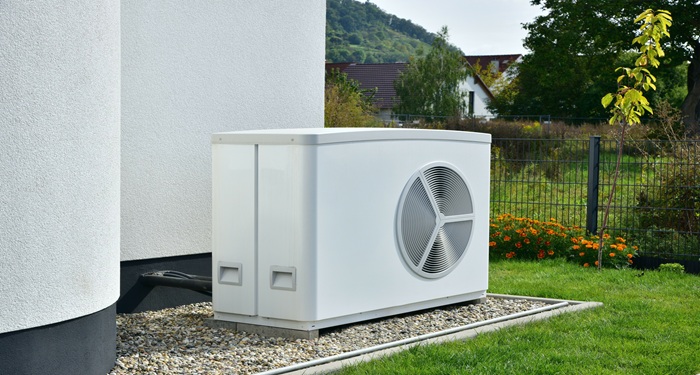
- Example cost: £13,000
Pros:
- Allows phased installation or retrofit
- Useful in properties with space constraints
- Provides redundancy in colder weather
Cons:
- Slightly less efficient than dedicated ground loops
- More components to maintain and manage
How Much Does It Cost to Remove a Ground Source Heat Pump?
Heat pumps are designed for long-term use, and considering the fact that the technology is rather modern, it is unlikely that your home has a heat pump to remove. However, if you are replacing a heat pump due to an upgrade or a fault, or simply want one removed in general, you can expect to pay around £2,000.
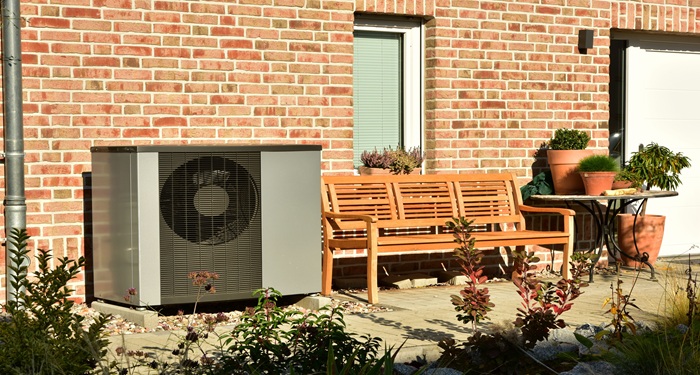
The removal process involves the disconnection of the system, the safe disposal of components (especially refrigerants), and restoring any land that may have been excavated. The pipework often remains buried, but that too may be decommissioned, and there is sometimes the requirement of specialist services for de-gassing and soil reinstatement.
A key thing to note here is that disposal must follow environmental regulations, especially regarding refrigerant gases. Homeowners may also want to landscape the area post-removal, which could add another £500–£1,000.
FAQs
Q: Is a ground source heat pump worth the investment?
A: A ground source heat pump is one of the best investments on the market for a home that is well-insulated. While the initial investment can put some homeowners off, this is more than offset by the lower energy bill, increase in valuation of the property and the reduction in carbon emissions. Additionally, incentives such as the Boiler Upgrade Scheme can help reduce upfront costs.
Q: How much can I save on heating bills with a heat pump?
A: According to research conducted by the Energy Saving Trust, households that switch from traditional heating methods that involve the burning of fuels to a ground source heat pump will save up to £450 per year in energy costs. The research can be found here.
Q: Do I need planning permission for a ground source heat pump?
A: In the majority of cases, no. The installation of a ground source heat pump is classed as permitted development. However, this doesn’t include homes that are protected, listed or are within conservation areas. For these homes, you may need planning approval, and you should check with the local authorities.
Q: How deep do the pipes go?
A: Horizontal loops are usually buried 1 to 2 metres deep. Vertical boreholes can range from 60 to 150 metres, depending on heating demand and ground conditions.
Q: Can a heat pump work in winter?
A: Ground source heat pumps are very effective in the winter, as the temperature deeper into the ground remains consistent all year round, which means that you can rely on your system even in freezing conditions.
Q: Do ground source heat pumps require a lot of maintenance?
A: Ground source heat pumps are known for their reliability, ease of use and low maintenance. However, annual servicing is recommended to ensure optimal performance.
Q: Are there grants or financial support for installation?
A: Yes. The Boiler Upgrade Scheme offers grants of up to £7,500 for eligible heat pump installations in England and Wales.

